Deadly citrus bacteria, harmful insects detected in Costa Mesa
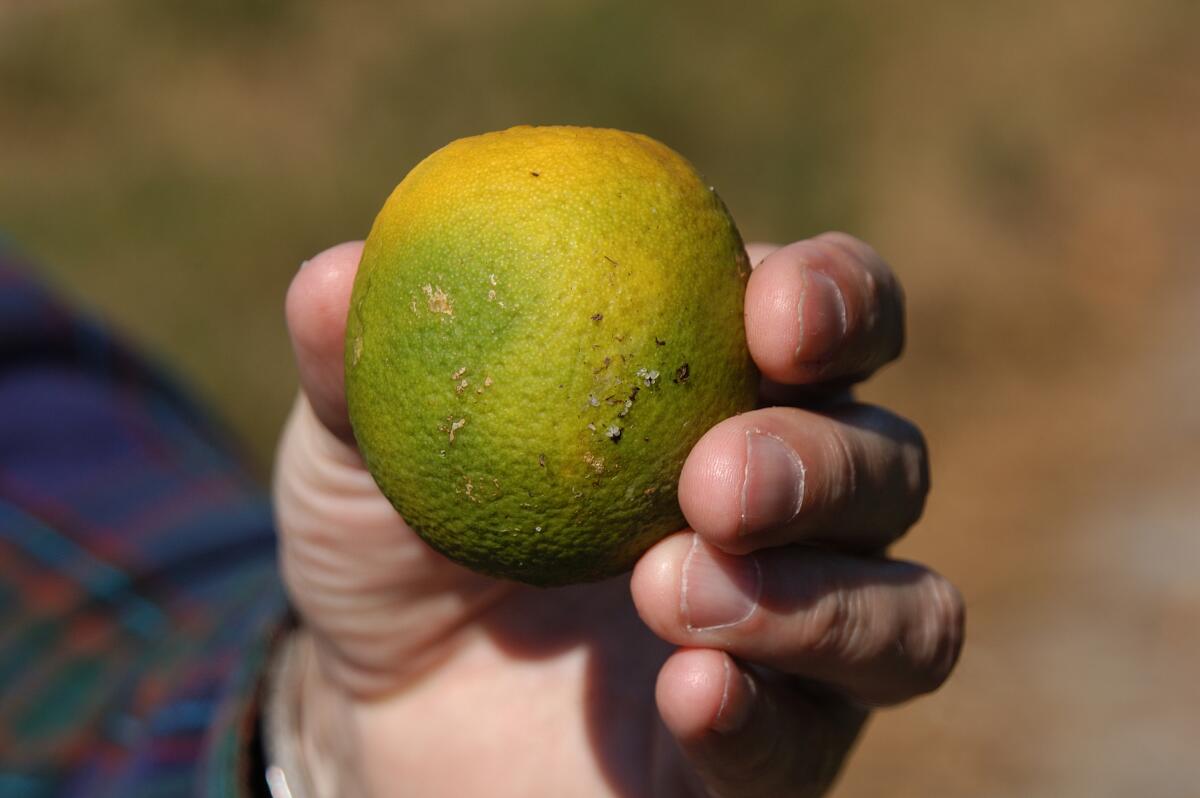
Some Costa Mesa residents are being notified citrus trees in their yards may need to be sprayed with insecticide or removed, after state agriculture officials confirmed the detection of harmful insects and a deadly bacterial disease on local properties.
But the solutions being provided by the state don’t sit well with locals, who say they’re concerned about the spraying of chemicals that could be hazardous to helpful garden insects and animals.
Representatives from the California Department of Food and Agriculture’s Citrus Pest and Disease Prevention division recently began surveying homes within a 250-meter radius of three detection sites near east side Costa Mesa’s Elden Avenue and homes on the northeast end of town, near the 405 Freeway.
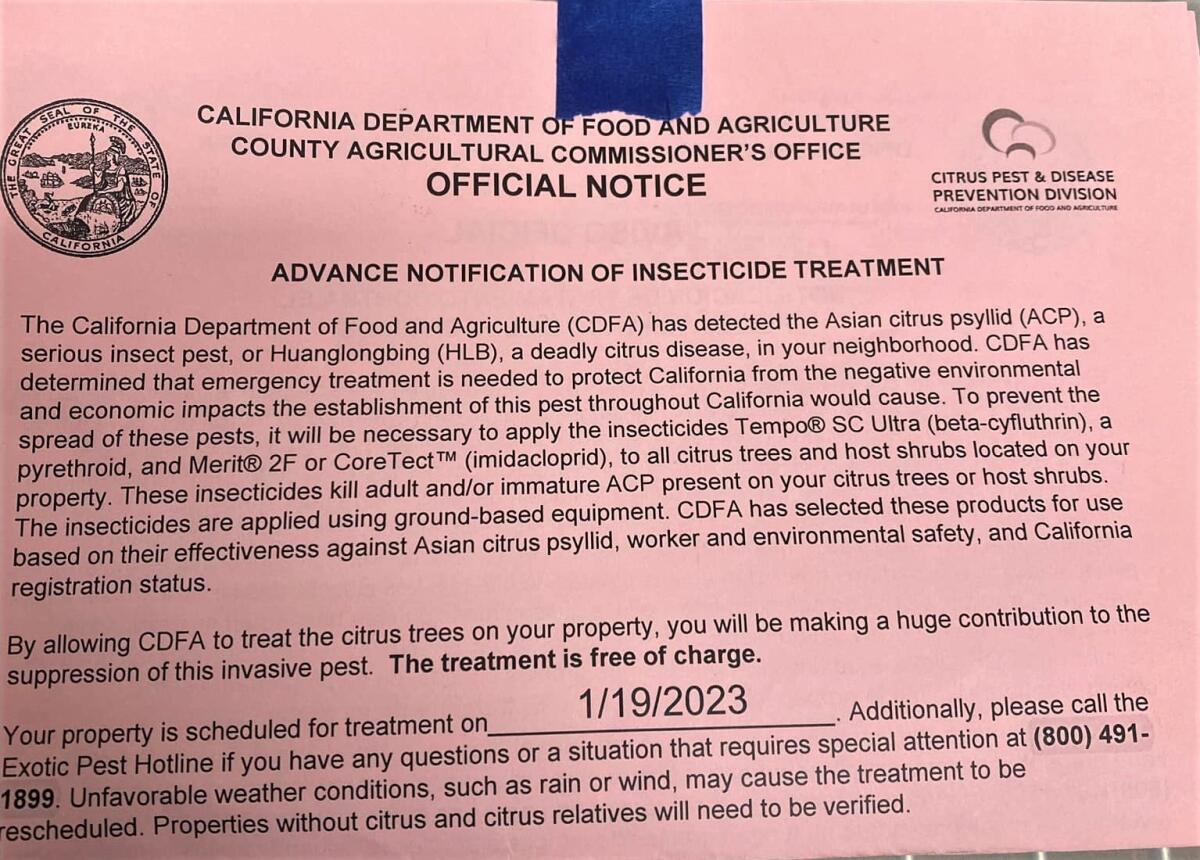
They are checking for signs of the bacterial disease Huanglongbing (HLB) and the Asian citrus psyllid (ACP) insects that ingest and spread HLB bacteria as they feed off citrus trees leaves.
Victoria Hornbaker, director of the division, confirmed Friday four psyllid samples and one case of HLB have been detected at three sites since Nov. 3.
It’s a concern, she said, because there is no known cure for HLB, which causes citrus greening and tree death by blocking nutrient absorption. Left unchecked, the highly spreadable disease could decimate backyard trees and even larger, commercial citrus growers.
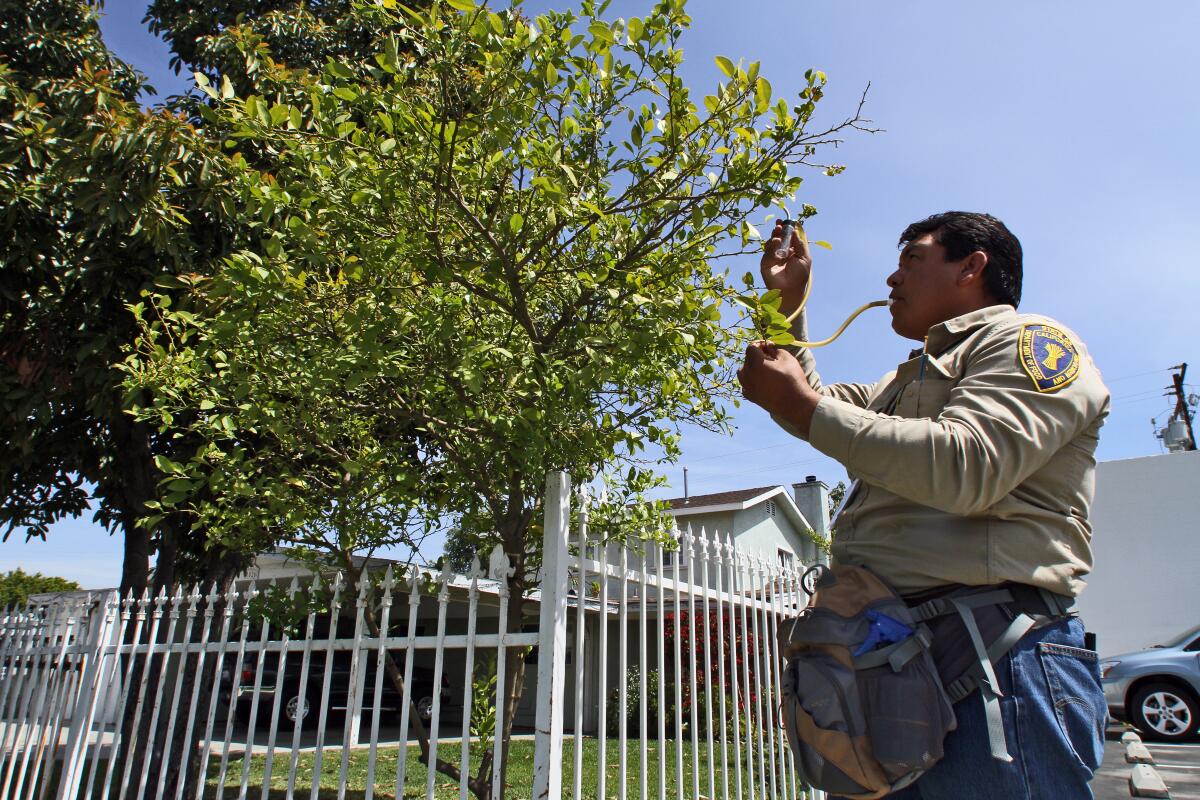
“As the disease progresses you may see entire shoots of the tree turn yellow,” Hornbaker said. “The fruit will not be able to fully ripen, and it will take on a rancid taste. Eventually, the entire tree will die.”
Asian citrus psyllids were first detected in California in San Diego County near the border with Mexico and had, by 2009, moved to Orange and Los Angeles counties, according to Hornbaker. The first instance of HLB in Orange County was recorded in 2017.
“We’ve since found psyllids all throughout Southern California, so the region is generally considered infested,” she added. “Their population grew so quickly we cannot conceivably eradicate the psyllids, so we focus our attention on the disease Huanglongbing the psyllids can carry.”
Protocols call for the surveying of lands within a 250-meter radius of a positive sample. If insects are discovered, CDFA employees will notify the owner of the property and recommend citrus trees be treated.
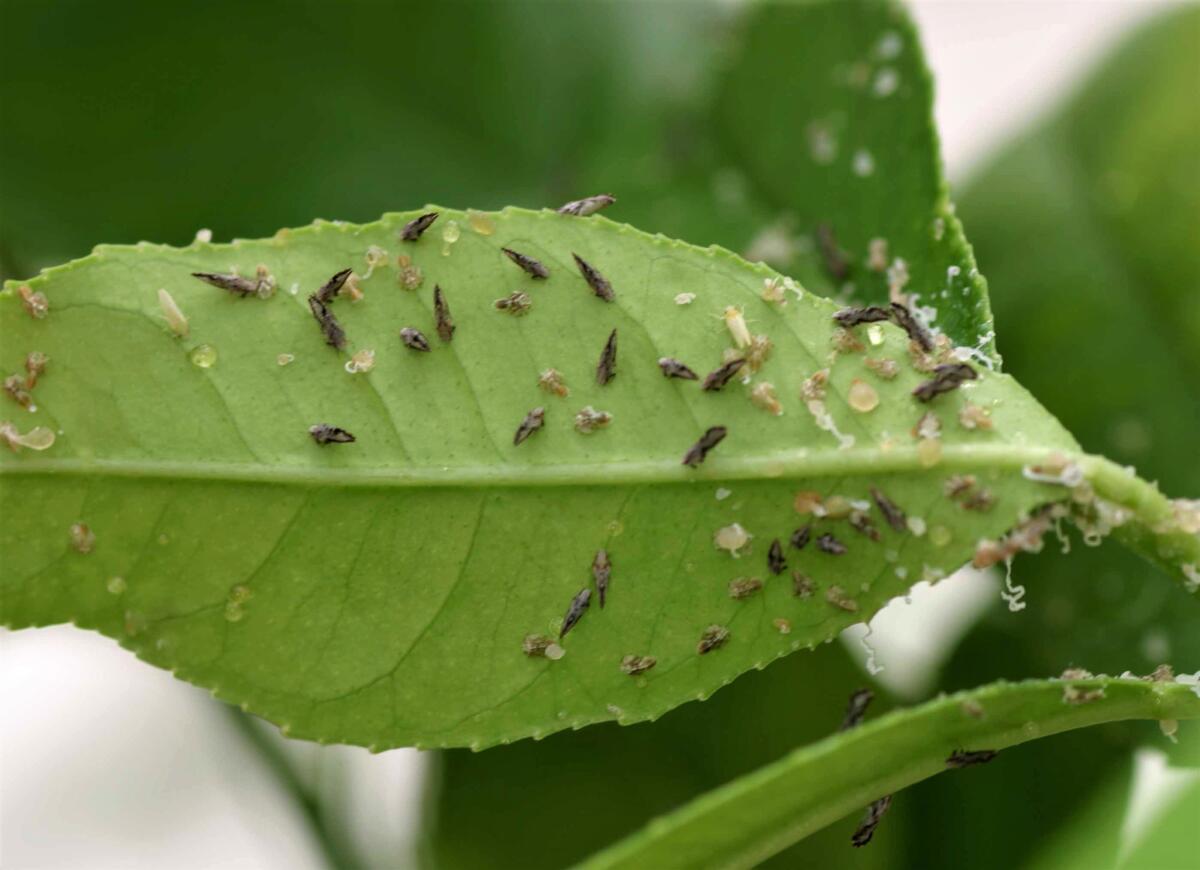
State approved insecticides used during a treatment — beta-cyflutrhin Tempo SC Ultra, pyrethroid and Merit 2F or CoreTect, types of imidacloprid insecticides — are designed to kill adult and immature Asian citrus psyllids. Hornbaker said Friday all chemicals are regulated and registered safe for use around humans.
Homeowners and occupants may refuse the treatment in cases where only insects have been discovered. But if workers detect HLB, there is no other recourse other than removal of the tree.
Costa Mesa resident Courtney Duncan, who lives on the 2600 block of Elden Avenue, received a pink slip on the door of her home on Elden Avenue Tuesday informing her any citrus trees on the property would need to be checked and potentially sprayed.
An avid organic gardener who’s studied and worked in the field of horticulture and botany, Duncan keeps many fruit and vegetable plants on her property, including a small Meyer lemon tree.
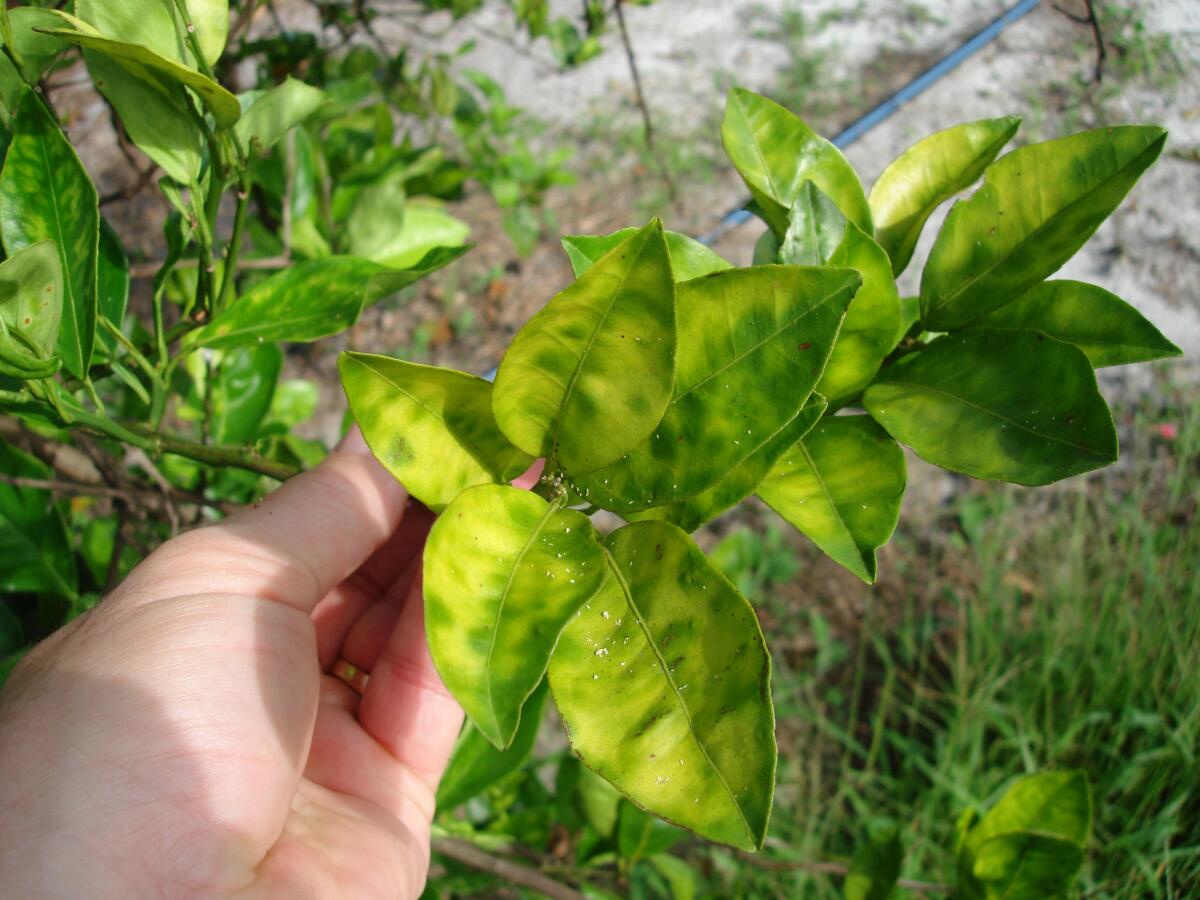
When she got the notice, she was worried about the health and safety of her non-citrus plants and the insects who benefit the garden and said as much on the following day, when a representative returned to the area.
“I didn’t want any of that poison sprayed into the food I put in my body,” Duncan said Friday, expressing concern for her cat, which spends time outdoors.
The worker checked her property, overlooking the fruitless lemon tree, and left a slip indicating there was no citrus on site. Later, while working in her garden, she smelled something like paint in the air and felt dizzy.
Duncan said there are other solutions besides chemicals to manage plant pests, including water and soap applications, natural oil treatments and the use of beneficial insects that eat bad bugs.
She urged residents to look for early signs of disease and damage in their citrus trees that might be eradicated before it’s too late.
“Sometimes you can potentially stop the disease from getting into the whole tree,” she said. “It’s about knowing what to look for and how to keep trees healthy.”
Hornbaker encouraged residents with questions or those who may have seen insects on their citrus trees or have a situation requiring attention, to call CDFA’s Pest Hotline at (800) 491-1899.
All the latest on Orange County from Orange County.
Get our free TimesOC newsletter.
You may occasionally receive promotional content from the Daily Pilot.




